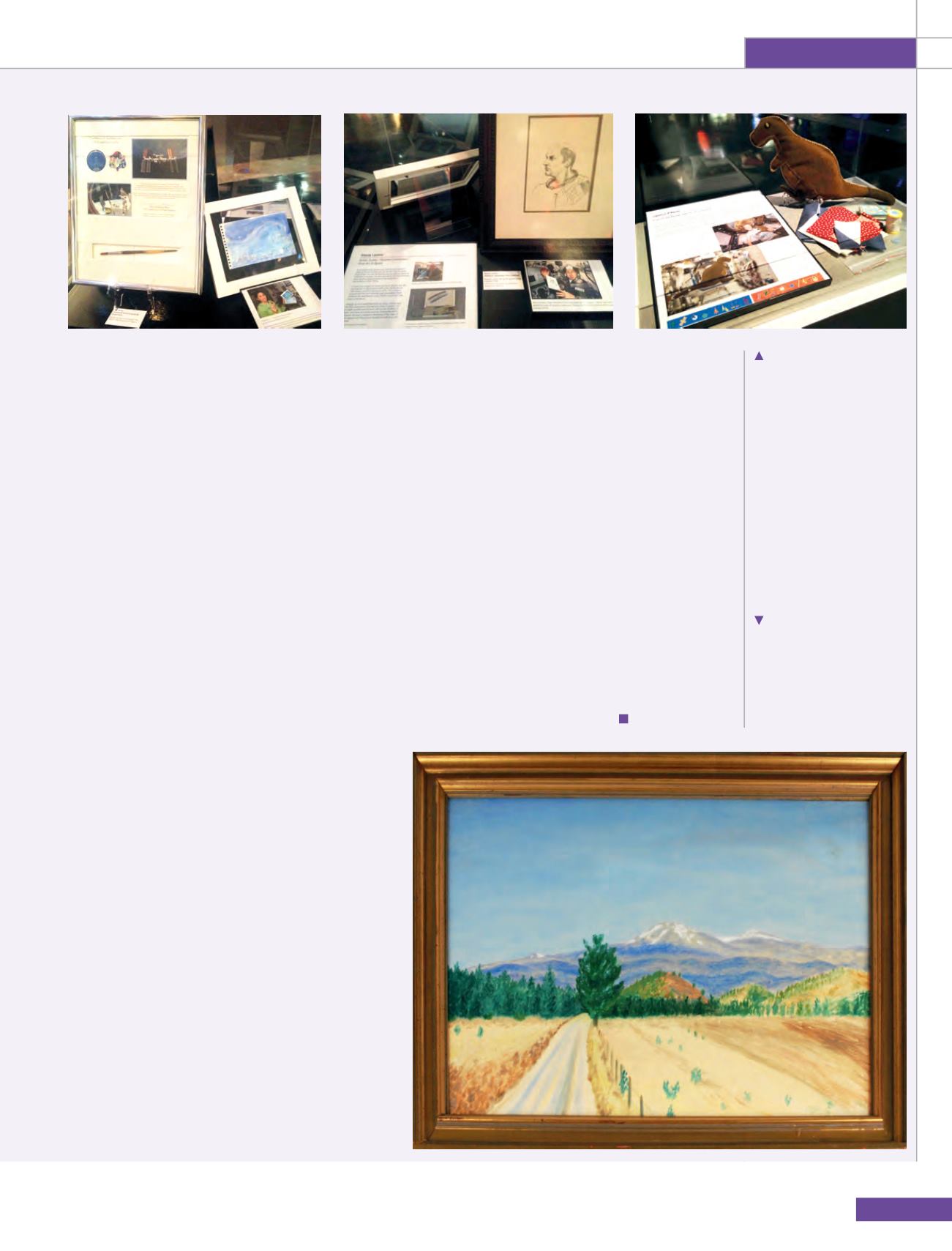
ROOM
107
Space Lounge
through the interaction between art and space.
To me the ‘surprise factor’ associated with this
interaction between art and space is what stood
out the most throughout the exhibit. Not only
the public’s surprise to discover this wonderfully
creative and meaningful side of these scientist’s,
engineer’s and astronaut’s lives but more
interestingly even was the surprise amongst the
local JSC community itself.
Some of these folks have worked together side-
by-side for over 20 years and had no idea of the
shared artistic talents of their co-workers. It was
so cool to see the reaction when they discovered
this and to know that from that point forward they
would have a totally new understanding of these
people they had worked with for so many years.
For me it was especially gratifying to make
this re-introduction and I’m hopeful that it will
encourage more inspiration for using artistic
expression to communicate the amazing things
we’re doing every day in space - and here on Earth
- through our space programme.
The surprises through all this didn’t stop there
for me though. As an artist and astronaut, I knew
that cosmonaut Alexei Leonov was the first to
draw in space (coloured pencil drawing of an
orbital sunrise); astronaut Alan Bean was the first
to retire from the astronaut office to pursue life
as an artist and uniquely share his spaceflight
experience (I am proud to follow in his footsteps
as only the second astronaut to take that path as
an artist post-NASA); and I know of many other
astronauts who also have artistic talent that they
pursue as hobbies.
Recently, however, I was delighted to discover
the artistic talent of another well-known space
figure, Robert H. Goddard, the ‘father of modern
rocketry’. A collection of Dr Goddard’s scientific
papers, his diary and about a dozen paintings are
held at the Robert Hutchings Goddard Library at
Clark University in Worchester, Massachusetts,
where he was a fellow of physics. The subject of
Robert H. Goddard
often relaxed by painting.
This picture is a view
about 90 miles west of
Roswell, New Mexico,
where Goddard lived and
worked for many years.
From left: the first
watercolour painted in
space by Nicole Stott
along with artist Ron
Wood’s paint brush, which
she used whilst in orbit;
original framed pencil
sketch of astronaut Tom
Stafford by cosmonaut
Alexey Leonov during the
joint Apollo-Soyuz
mission; stuffed toy
dinosaur sewn by
astronaut Karen Nyberg
during her ISS flight.
his paintings, however, were not space but the
scenery of New Mexico.
The fact that Robert Goddard, the man whose
study and invention associated with rocket
technology made space travel possible, also loved
to paint is very reassuring to me and is another
impressive example of the very positive influence
that comes through the interaction between art
and space in someone’s life.
I hope you’ll take the time to discover more
about both the space technology and the artistic
talents of Robert Goddard, and perhaps the
artistic talent that can be found in surprising
ways in the people that surround you. As you
consider the work of Robert Goddard and his New
Mexico landscapes, I hope you’ll also continue
reading and be inspired by the wonder of space
that is so beautifully captured in the vibrant and
unique ‘Spacescape’ paintings of artist Zoe Squires
featured on the following pages.


